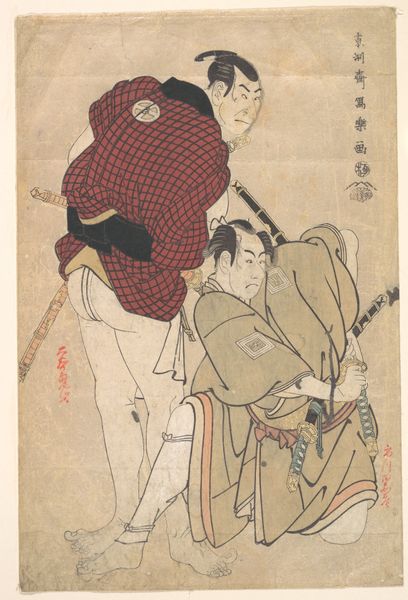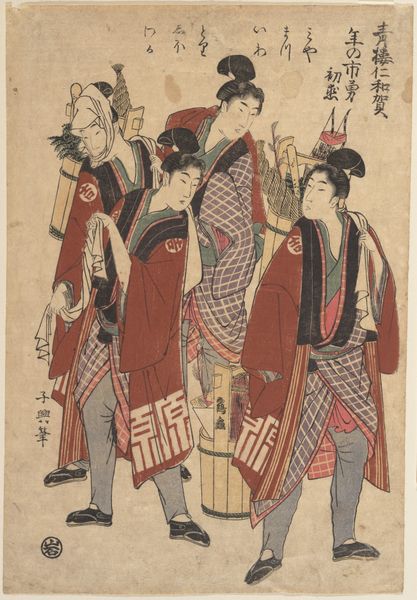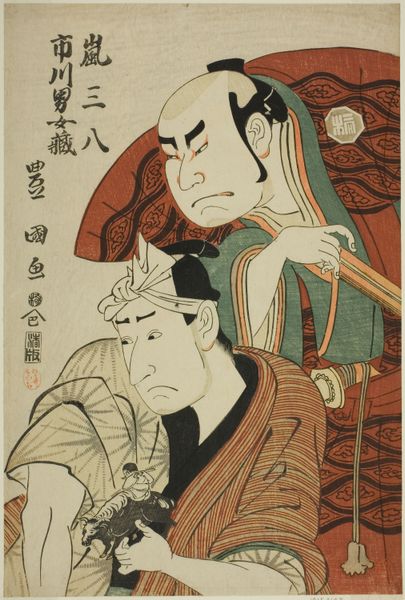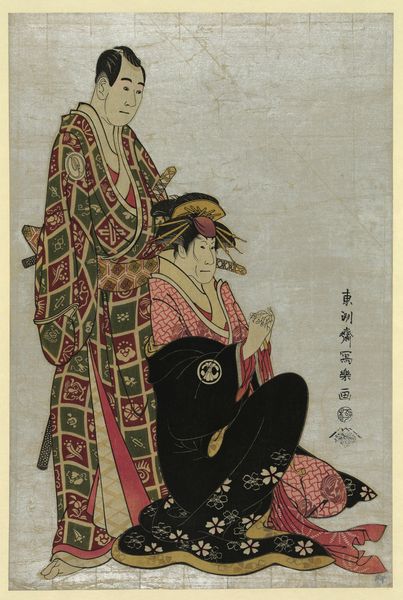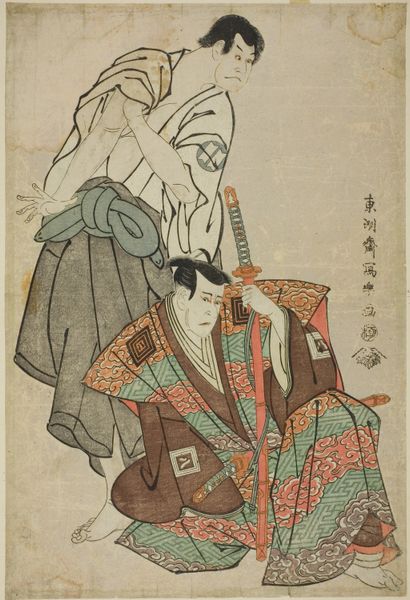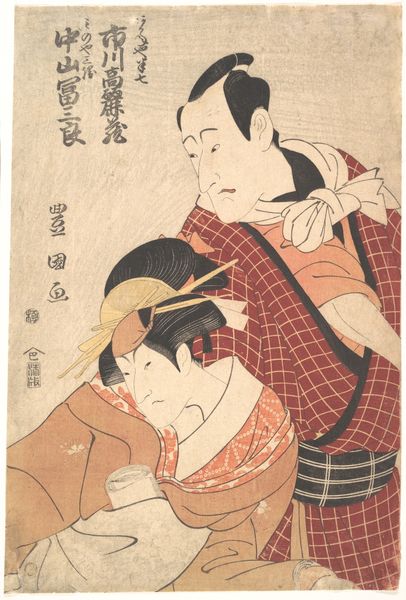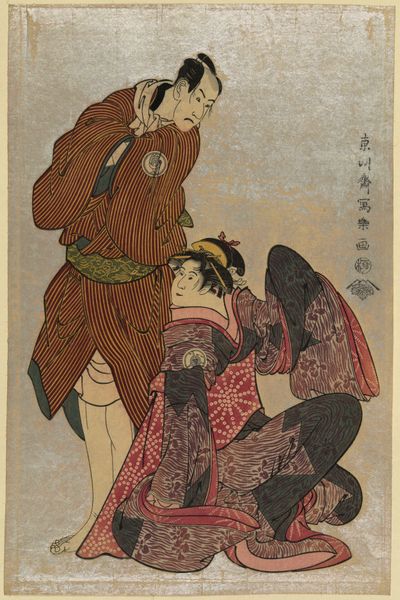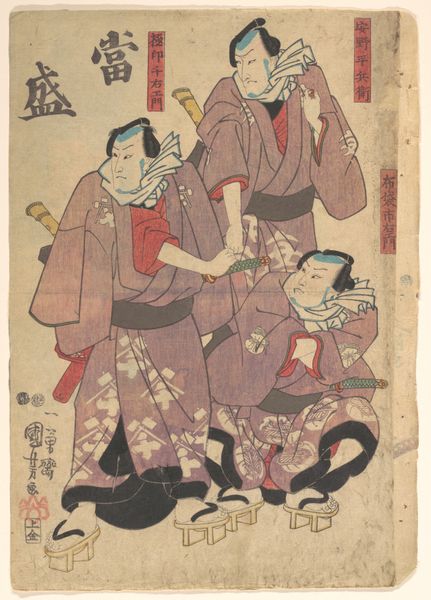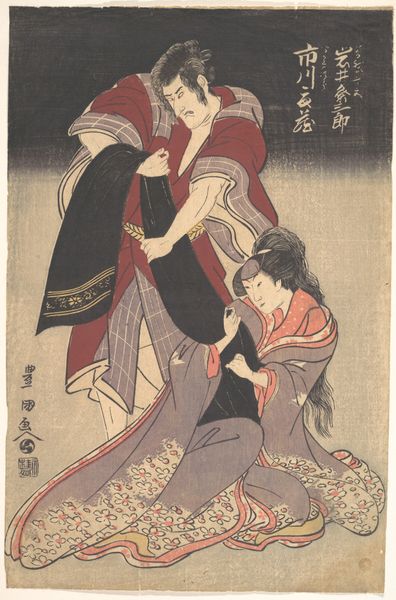
print, woodcut
# print
#
caricature
#
asian-art
#
caricature
#
ukiyo-e
#
text
#
woodcut
#
portrait art
Copyright: Public domain
Editor: This is "Kabuki Actors Otani Oniji III and Ichikawa Omezo I" by Tōshūsai Sharaku, created in 1794. It’s a woodcut print, and what really jumps out is the expressiveness of the figures – their strained faces, the dynamism... what do you see when you look at this work? Curator: Considering the social context of Edo-period Japan, the print becomes really compelling. Think about the woodblock production – a collaborative process involving the artist, block carver, printer, and publisher. This challenges the idea of the lone genius artist and speaks to a much broader system of labor. Editor: So, it’s less about Sharaku’s individual talent and more about the workshop that made this possible? Curator: Exactly! And look at the materials: wood, ink, paper. These weren't luxury materials. Ukiyo-e prints like this were for mass consumption, aimed at a merchant class with disposable income and an appetite for representations of their cultural heroes. It makes you think about supply chains, doesn’t it? The paper itself might come from specific regions renowned for its production, utilizing unique techniques and labor. Editor: The print is quite detailed, but it feels like caricature… how did Sharaku navigate those restrictions imposed by production limitations? Curator: Think about the carving process, the need for clean lines to allow for multiple impressions. And how the colours are applied and layered. What is being represented through this mode of production? A booming, yet somewhat constrained consumer society. Editor: I hadn’t really considered the consumer aspect so deeply before. It really changes the way you interpret these artworks. Curator: Yes, this print shows us how something mass-produced for popular culture can still be incredibly complex, telling us about the materials and labour.
Comments
No comments
Be the first to comment and join the conversation on the ultimate creative platform.
